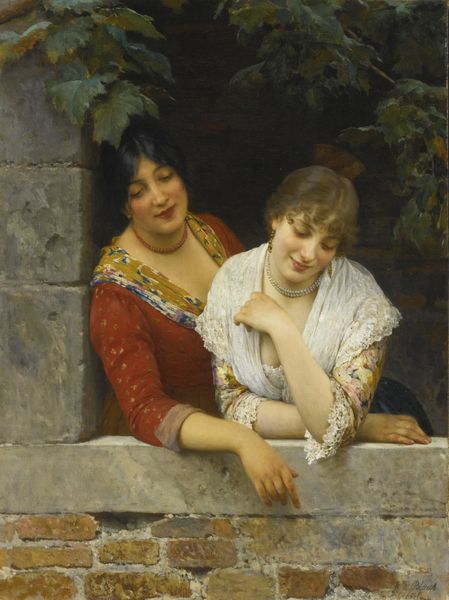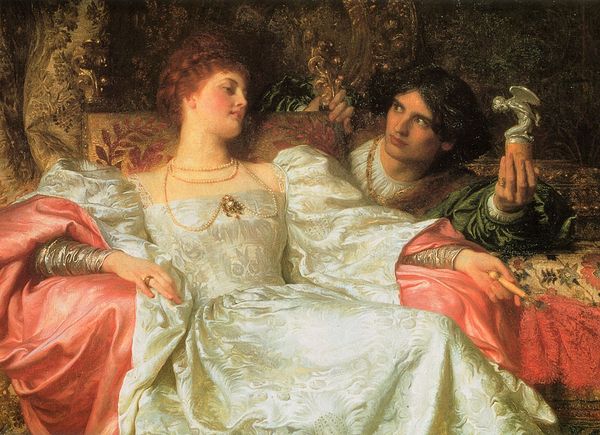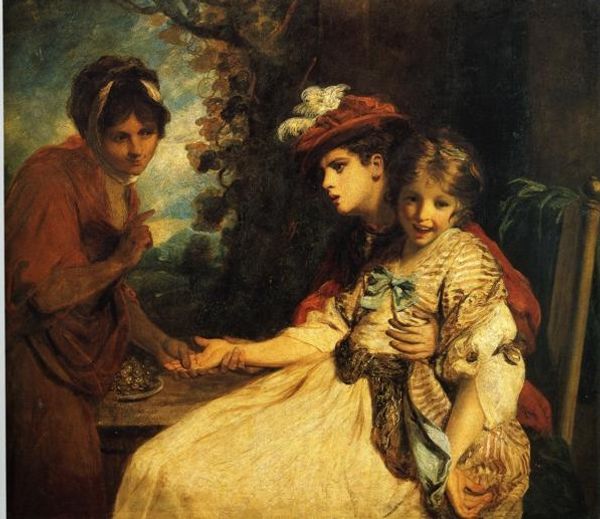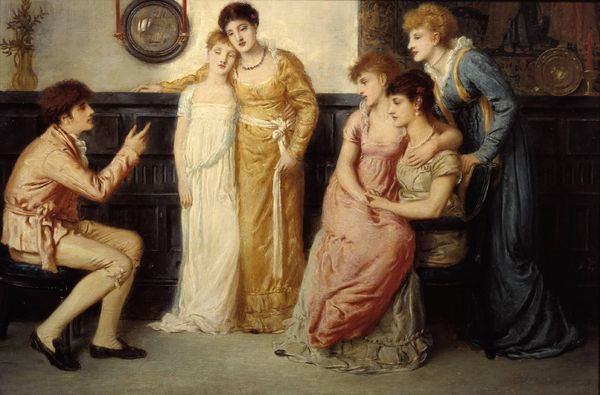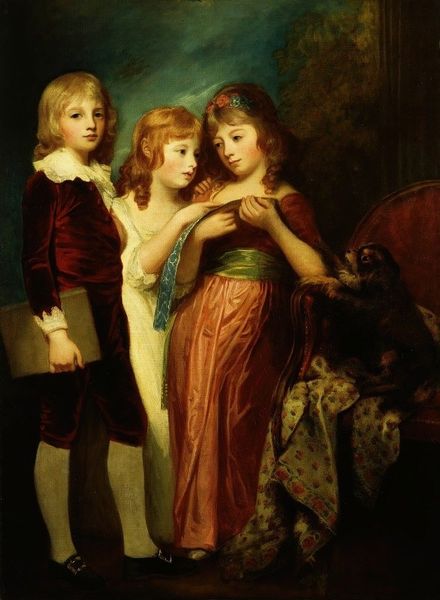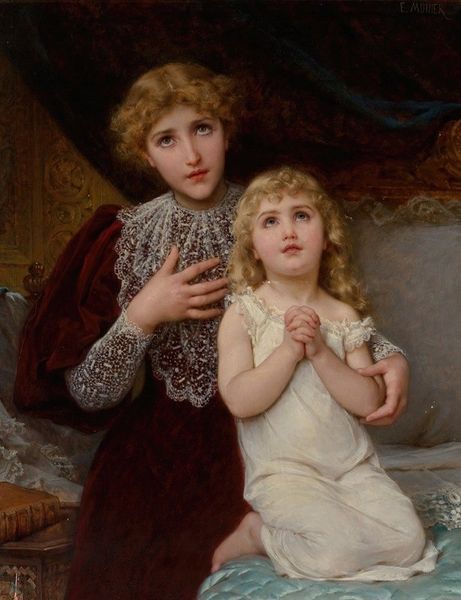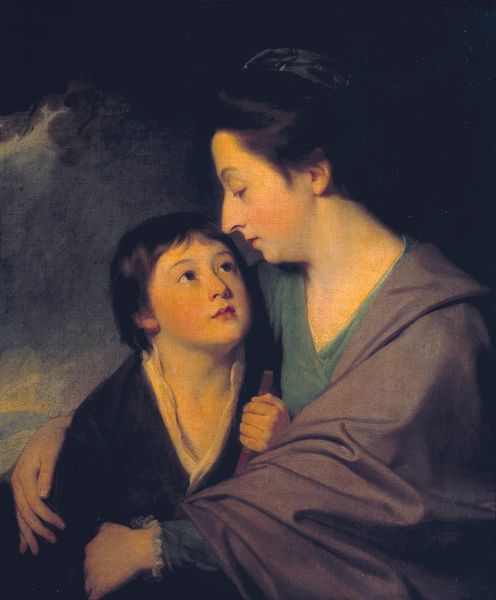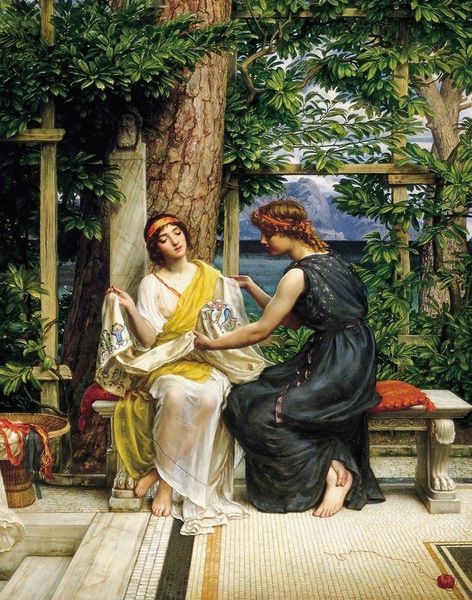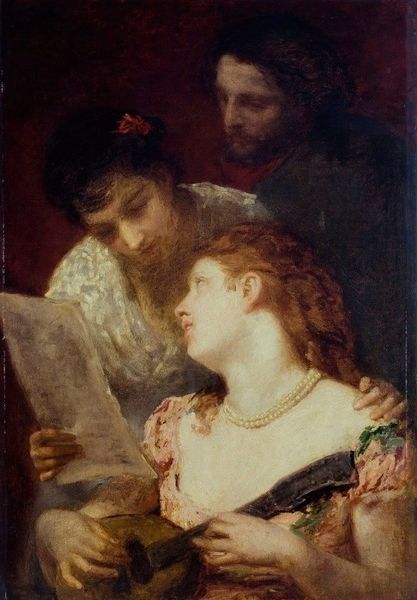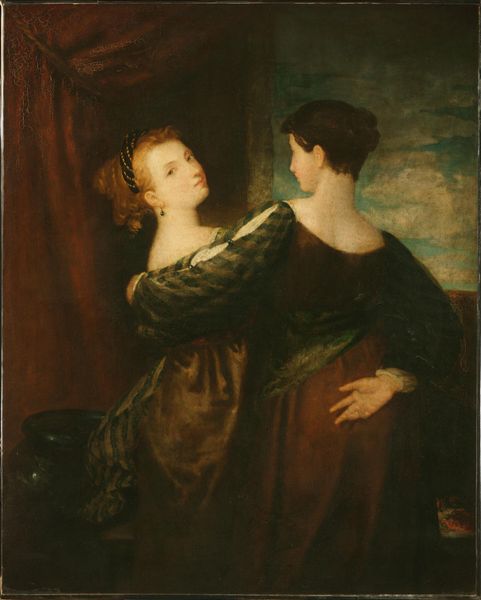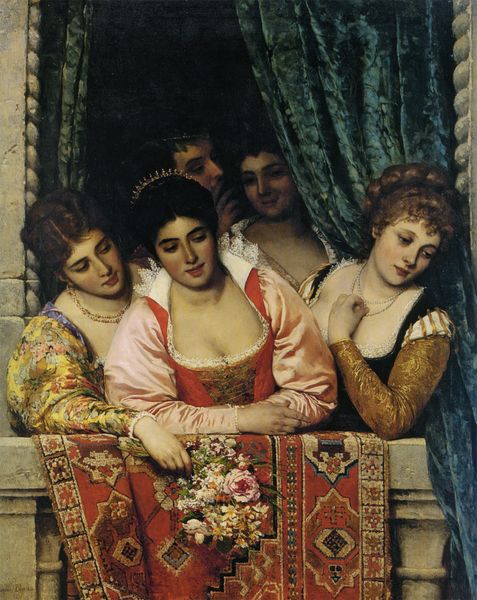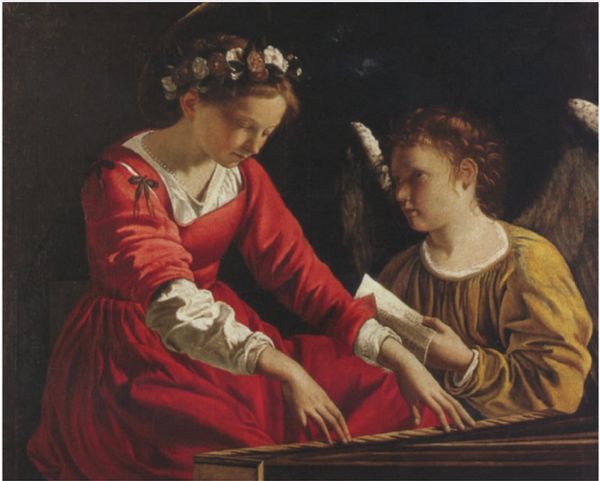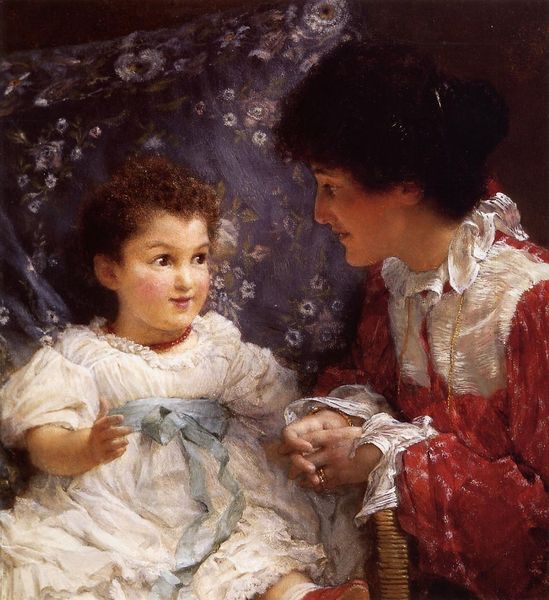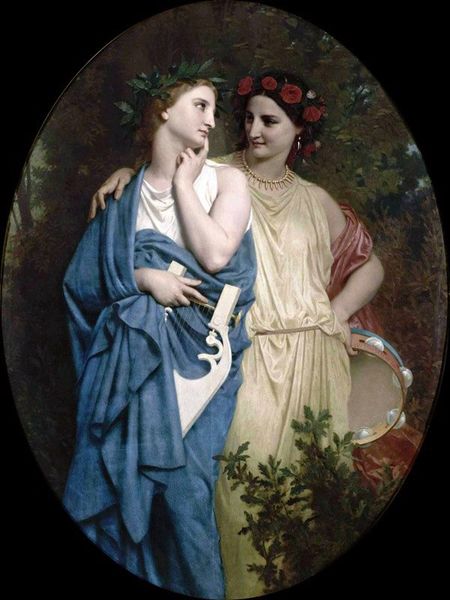
Dimensions: 101.6 x 80.6 cm
Copyright: Public domain
Curator: Let’s discuss Lawrence Alma-Tadema's "Gallo Roman Women," created in 1865 using oil paints. It presents two women positioned behind an ornately carved marble structure, appearing to gaze downwards, perhaps lost in thought. What’s your initial reaction? Editor: I find it instantly evocative of a very particular kind of melancholy—it's in their downward glances, the lush but somber backdrop of foliage... it feels heavy with untold stories of gender, class, and access in this historical context. Curator: I see that too. Alma-Tadema's painstaking detail—notice the way the light catches the marble, the textures of their garments, even the intricate hair braiding—speaks to a fascination with recreating a plausible historical scene. This was, of course, during a period heavily influenced by Neoclassicism and a romanticized vision of antiquity. Editor: Absolutely, and we can't ignore the politics embedded in this apparent realism. It depicts the subjects almost passively. Is this presentation of women actively perpetuating particular socio-political norms around femininity during the Victorian era through the medium and process of oil painting and its consumption by privileged social classes? Curator: The production quality would have been incredibly labor intensive—the sourcing of pigments, the preparation of the canvas, the artist’s own skill, all are indicative of significant resources and investment. It makes you think about artistic patronage and who had the power to commission and consume such works. Editor: Precisely. Beyond the surface beauty, this artwork engages with notions of cultural heritage and idealized representation of historical womanhood, making it an intersectional point through which we can interrogate historical narratives, challenge stereotypes, and discuss how those concepts continue to impact contemporary culture. Curator: Seeing it through this lens reminds us that it's more than a history painting; it is also a document reflecting Victorian society's own values and preoccupations, reproduced through material production practices. Editor: Ultimately, by interrogating these paintings, we are provided with important historical reference points, prompting a re-evaluation of cultural legacy, the materialization of meaning, and representation—a critical consideration.
Comments
No comments
Be the first to comment and join the conversation on the ultimate creative platform.
